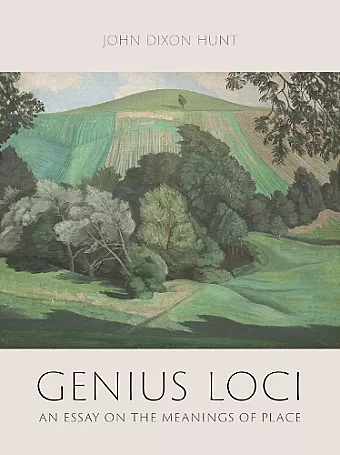Genius Loci
An Essay on the Meanings of Place
Format:Hardback
Publisher:Reaktion Books
Published:17th Oct '22
Should be back in stock very soon

For Romans, genius loci was literally ‘the genius of the place’, the presiding divinity who inhabited a site and gave it meaning; while we are less attuned to divinity today, we still sense that a place has significance. In this book, eminent garden historian John Dixon Hunt explores genius loci in many settings, including contemporary land art, the paintings of Paul and John Nash, the work of the travel writers such as Henry James, Paul Theroux and Lawrence Durrell on Provence, Mexico and Cyprus, and landscape architects who invent new meanings for a site.
This is a nuanced, thoughtful exploration of how places become more significant to us through the myriad ways we see, talk about and remember them.
[John Dixon Hunt] has . . . produced a miscellany of thoughtful reflections called Genius Loci. We are . . . offered a potpourri of essays. Among the book’s successes are treatments of the High Line in New York and the reimagining of dead industrial spaces in the architecture of Peter and Anneliese Latz. -- Jonathan Bate * Times Literary Supplement *
John Dixon Hunt is well established as one of the great specialists on gardens and garden design in the historical and cultural imagination. What has always marked him out is the scope of his enquiry, the literary and philosophical springs that irrigate and enrich his approach. These are manifest in this magnificent new book, which represents in many ways a summum of his thought on landscape and architecture. Hunt implies how any true apprehension of place must operate not only according to what is actually there, but also with the cultural accretions we bring to it, along with a moment-by-moment report on what actually being there is like. * Stephen Romer, Lecturer in French, Brasenose College, Oxford *
The idea of the genius loci, and the many variations on that phrase, such as "sense of place," have been more often gestured towards than pondered in modern writings about nature and landscaping. And yet, in its many guises, it remains central to the way people see, think about, and interact with them. John Dixon Hunt has thought and written both on and around this nexus of terms for decades, and we are fortunate that he has distilled the wisdom gleaned from his experiences into this set of remarkably diverse, probing, and magically insightful essays. Ranging from the island of Torcello to French theory, and from J.M.W. Turner to modern place-making practices, Hunt pursues a gleefully thought-provoking and challenging path through this particular intellectual – dare I say, garden – labyrinth. * Edward S. Harwood, Associate Professor of Art and Visual Culture, Bates College *
ISBN: 9781789146080
Dimensions: unknown
Weight: unknown
216 pages